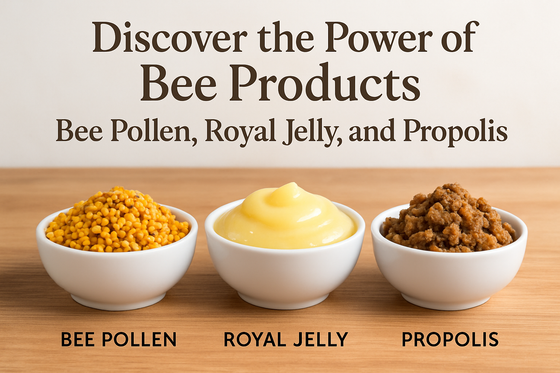
We love substituting honey in our recipes. Not only do we think it makes the food taste better, but it's also better for us! Honey is commonly used as a sweetener in teas and as a kick of sweetness drizzled on toast and in desserts. And what's so great about it is that it's slightly sweeter than sugar, so less can be used to acheive the same sweetness intensity.
However, cooking or baking with honey versus sugar requires some extra attention, and there are a few things to keep in mind when using it in your recipes.
Honey-sweetened baked goods tend to brown faster. Therefore, you need to bake them a little longer, but at a lower temperature to prevent them from burning. The same applies to cooking, too. Be sure to stir more often and turn down the temperature slightly to avoid scorching the dish. You will need to reduce the called for temperature by 25 degrees F.
Honey adds approximately three tablespoons of extra liquid per cup. Which means your baked goods will stay fresher for longer than those made with sugar. The slower baking will also help keep the texture of your baked goods moist rather than wet. Reduce the liquid called for in baked goods by about 1/5th to adjust for the extra liquid.
Since honey is slightly acidic, adding a little baking soda to the recipes of baked goods will help. Just the smallest amount, approximately 1/8 to 1/4 teaspoonful per cup of honey, will be enough to counteract the acidity of the honey which can cause overbrowning. However, don't add soda to yeast breads, because the leavening thrives in the mildly acid environment.
No matter what you cook or bake, remember that honey adds a special touch to almost any recipe. It provides that lingering flavor after a juicy bite that will leave your taste buds begging for more! Stick to these three, simple adjustments and you shouldn't run into any problems when cooking/baking with honey. However, following the rest of the recipe is up to you. Good luck and eat well!
Comments will be approved before showing up.

Propolis is a resinous mixture produced by honey bees when they collect sap from trees and mix it with beeswax and enzymes. The result: nature’s own protective compound, used by bees to seal their hive and guard against bacteria, fungi, and weather.
Because of its rich composition of polyphenols, flavonoids, and antimicrobial compounds, propolis is now valued as a “bee-made immunity booster” and “ wellness ally.” PMC+2PMC+2

Let’s get real about honey bees for a second: These little guys are basically the world’s MVPs. You think they buzz around making honey for your toast? Bees: The Real Foodies’ Wingmen, Here’s the serious bit: When bees start dropping off, it’s a big red flag for the environment. They’re like those canaries in the coal mine—if they’re not okay, odds are, we’re messing something up (pesticides, climate, you know the drill). Saving the bees isn’t just about saving honey; it’s about keeping our own butts.

Bee Pollen vs. Royal Jelly vs. Propolis: There are numerous bee products available, so let’s take a moment to examine the differences between bee pollen, royal jelly, and propolis.
Bee products have been revered for thousands of years, trans-culturally, for nourishment, healing, and well-being. Today, they are being rediscovered as natural superfoods. Three of the most popular treasures of the hive are bee pollen, royal jelly, and propolis. They’re often combined, but each is also quite distinct in its origins, components and health benefits. Appreciating these differences can help you make the most of what nature’s hardest workers offer.